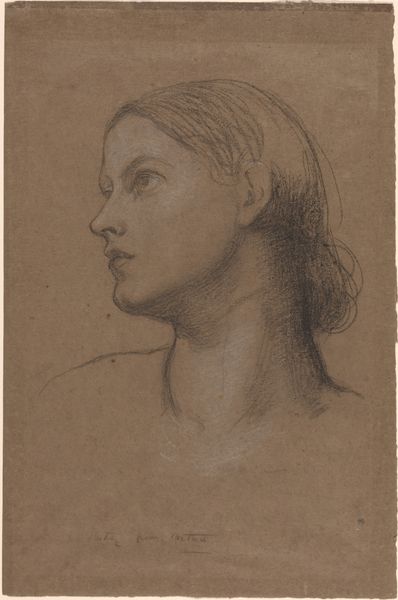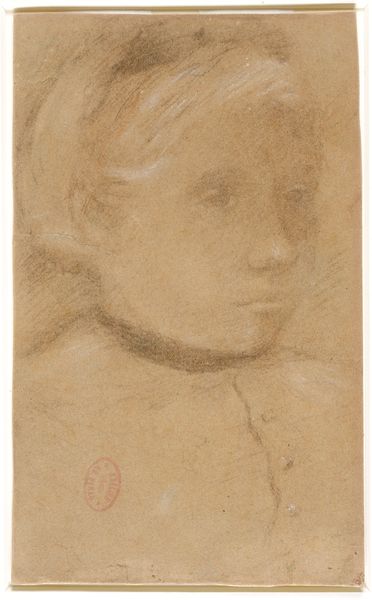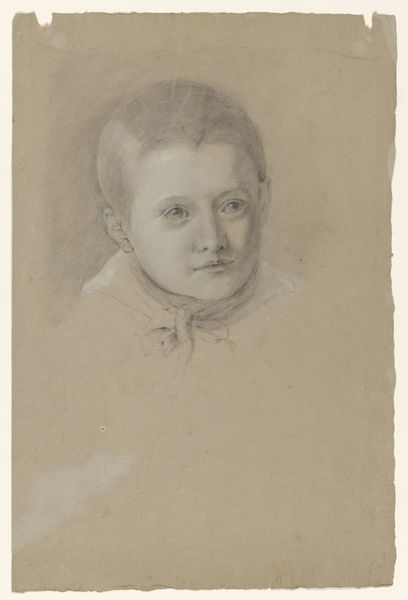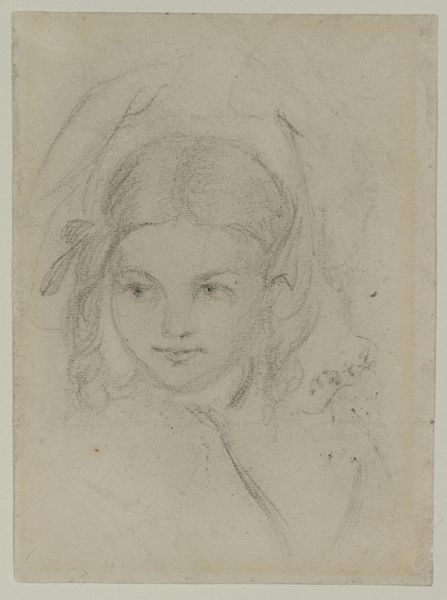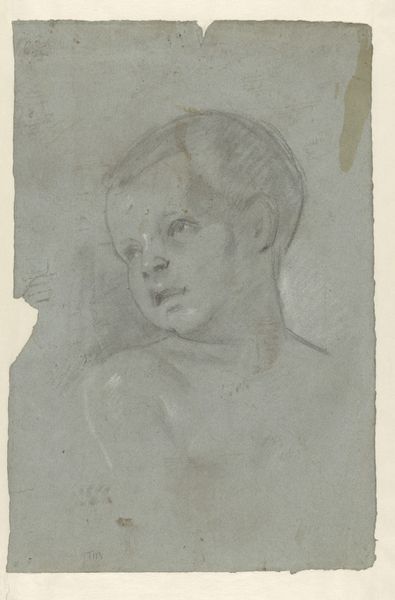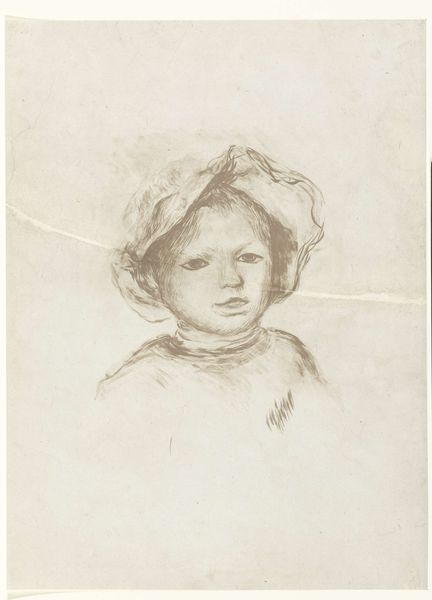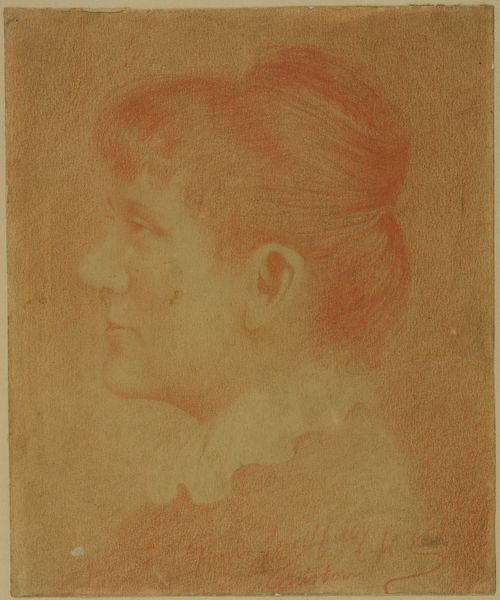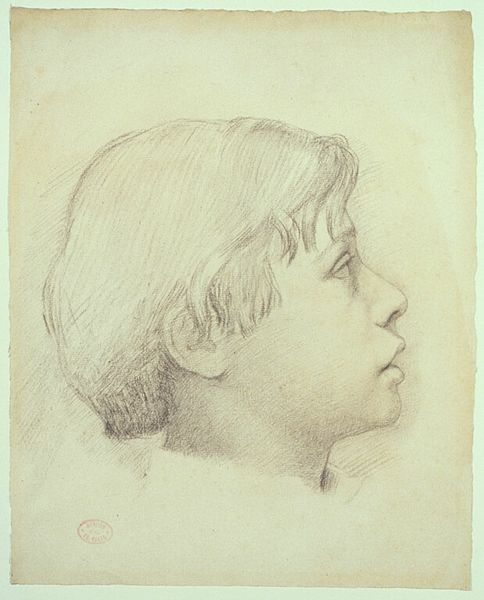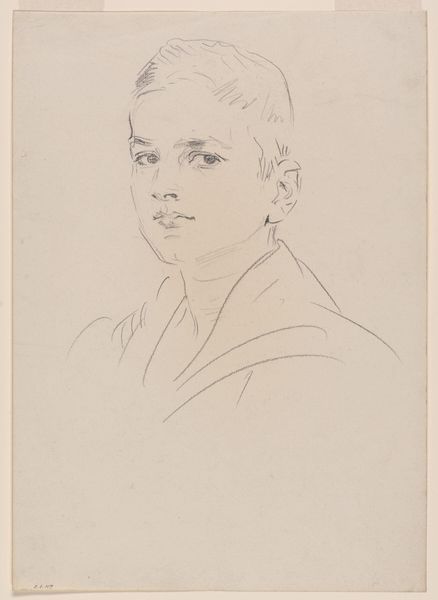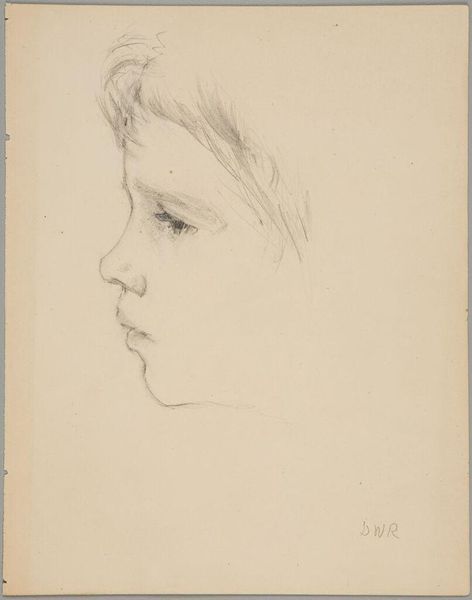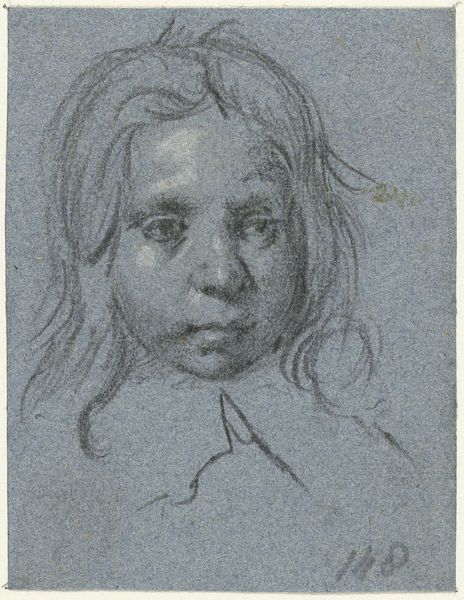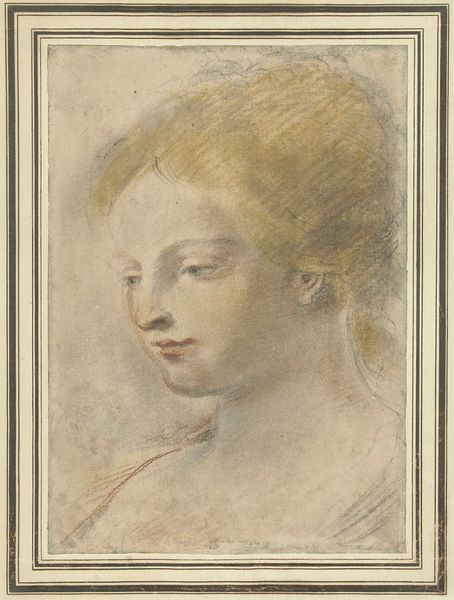
drawing, charcoal
#
drawing
#
facial expression drawing
#
impressionism
#
pencil sketch
#
charcoal drawing
#
portrait reference
#
pencil drawing
#
animal drawing portrait
#
portrait drawing
#
charcoal
#
facial portrait
#
academic-art
#
portrait art
#
fine art portrait
Dimensions: height 177 mm, width 148 mm
Copyright: Rijks Museum: Open Domain
Editor: So, this is Edgar Degas' "Portret van een vrouw", dating roughly between 1853 and 1910. It’s a drawing, seemingly charcoal and pencil on paper. There's something incredibly soft about it, almost dreamlike, but also unfinished. What strikes you most about this portrait? Curator: I'm drawn to the material qualities. Notice how Degas uses the charcoal not just to depict form, but to create texture. Consider where he would have acquired the charcoal, perhaps manufactured in bulk with a specific chemical composition for a certain cost, revealing much about how artistic production was changing and becoming potentially industrialized during his era. Editor: Industrialized? I hadn't thought about the implications of readily available materials like that. Curator: Precisely! Before mass production, creating charcoal involved a very different kind of labor, often deeply connected to the landscape. Its accessibility changed artistic practice, no? Do you think the subject's perceived social standing might intersect with the materials available to the artist, informing our viewing experience? Editor: Interesting! It is also a drawing and not a painting, which impacts the materials…it feels immediate. Curator: Exactly. The medium lends itself to a quicker, more reproducible process. It makes you wonder, doesn’t it, about Degas's choice. Was it economical? A study for a larger work? Was charcoal a method to circumvent a wealthier patron expecting oil on canvas? Editor: It certainly provides a different lens to consider his entire body of work, rather than simply as aesthetic objects. Thanks for expanding my perspective! Curator: Likewise! Considering the socio-economic conditions and materials allows a more nuanced understanding of art history.
Comments
No comments
Be the first to comment and join the conversation on the ultimate creative platform.
